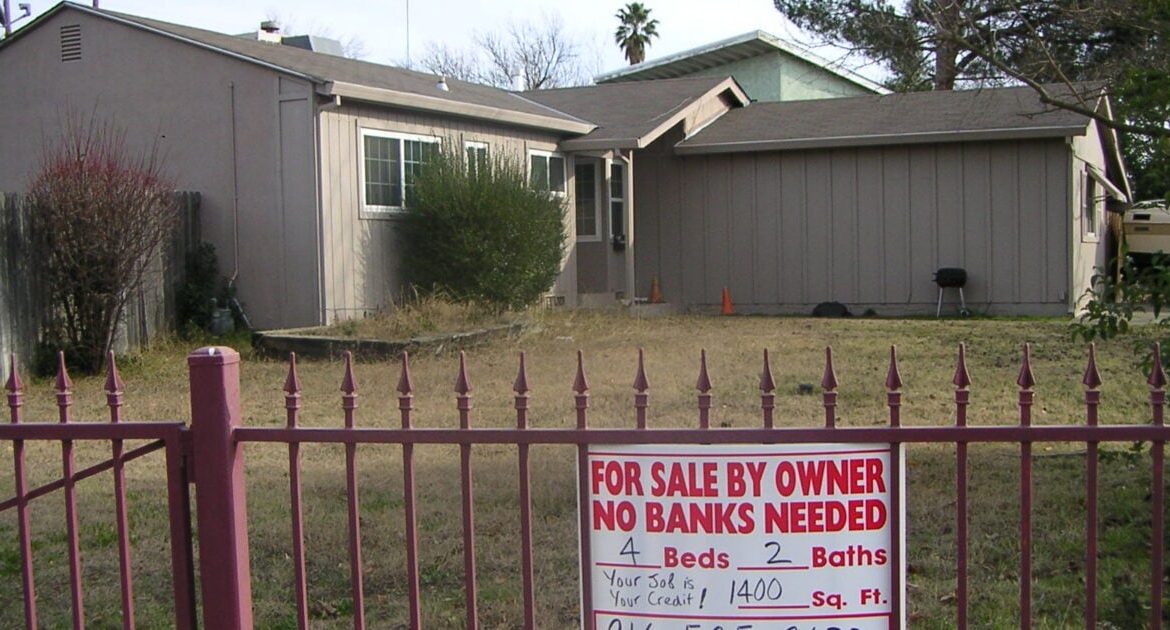

The Democrats claim that if Joe Biden were reelected, he would lower housing costs. However, there is no way for the government to reduce housing costs other than by getting out of the private housing market.
Most tools available to politicians for lowering housing costs involve a forced transfer of wealth from taxpayers to tax consumers.
These tools violate private property rights and exacerbate the problem by causing shortages or driving prices up.
The one policy that could effectively reduce housing prices—getting the government out of the housing market—would never be proposed by a Democrat administration.
Cutting regulation and taxes could reduce new house prices by approximately 23.8%. All other tools at their disposal would be destructive.
Rent control is often the first policy proposed to address housing issues, popular with voters wanting lower rents. However, it increases demand for rentals while decreasing supply. For example, the average US rental is $1,987 per month.
If someone offered you $100 a month to rent your spare bedroom, you’d refuse. But if they offered $10,000, you’d consider it. Thus, as rental prices rise, supply increases.
Conversely, if the government capped rent at $100, you wouldn’t rent out your spare bedroom, demonstrating that lower prices reduce supply.
Price caps on home sales are another proposed idea, but they generally gain no traction.
Aside from being a significant violation of private property laws, they would cause housing shortages and threaten the entire economy.
For example, if your home’s market value is $438,000, the current average house price, you wouldn’t want to sell it for a government-capped price of $375,000, so you’d take it off the market.
Furthermore, your home secures your mortgage. Banks would face collapse if all their $438,000 mortgages were secured by properties that could only sell for $375,000, similar to the 2008 mortgage crisis.
Additionally, construction companies would be unwilling to build houses if they had to sell them for less than the cost of building.
Free money is always popular with voters. Government subsidies, such as direct payments to renters, transfer wealth from taxpayers to tax consumers, and put taxpayer money into the pockets of for-profit landlords.
Programs like rent subsidies and Section 8 housing vouchers increase demand for housing, driving up prices for everyone else.
These subsidies not only increase the tax burden on working people but also contribute to rising rent prices elsewhere.
Additionally, such projects often fail to provide adequate housing and have become centers of crime and poverty.
Democrats often attack zoning laws, advocating for interventions like eminent domain and abolishing zoning ordinances to force multifamily housing in residential neighborhoods.
These actions infringe on private property rights, reduce the value of existing homes, and increase crime and other issues associated with higher population density.
Building multifamily housing in residential areas strains local schools, as property taxes, which fund schools, are assessed based on property value, not the number of families or children.
Cities like New York and San Francisco face school funding crises caused by high-density public housing and low tax revenues.
Public-private partnerships are another example of transferring taxpayer money to for-profit private companies to build “affordable housing” that will be sold or rented below market value, leading to shortages and higher prices.
Offering tax incentives or grants to private developers for building affordable housing units has similar issues.
Additionally, it decreases government tax revenue, shifting more of the tax burden onto working people.
Democrats are obsessed with enhancing transportation infrastructure. Not only does this cost taxpayers money, but it also increases housing costs. Homes that are an hour and forty-five minutes away from the city are cheaper due to the commute.
Installing a rail system that reduces commuting time will drive up the prices of these houses.
This benefits existing homeowners, which is a good thing, but it does not address the problem of creating more affordable housing for the poor.
So, this is one more example of Democrat policies taken in the name of the poor, which actually hurt the poor.
The one thing the government could do to reduce housing costs is to step back.
Less government and fewer regulations will lower housing prices. Democrats argue for government intervention to ensure more equitable access to homes. However, current laws allow any person, regardless of color or religion, to buy a house.
Disparities in homeownership rates are due to differences in income and wealth, not race or legislation. Providing free or state-subsidized housing reduces the motivation for homeownership among tax consumers.
Regulation and government involvement are the problems.
Democrats push for a higher minimum wage, and the Davis-Bacon Act requires paying local prevailing wages on public works projects, increasing labor costs and the overall cost of housing development.
Builders face regulatory fees and taxes, which, according to the National Association of Home Builders (NAHB), account for about 23.8% of the final price of a new single-family home, or $93,870.
In short, the only thing Democrats could do to reduce home prices is to reduce regulation, and this is the one thing they are not proposing.
The post White House Promise to Lower Housing Costs Will End in Disaster appeared first on The Gateway Pundit.

